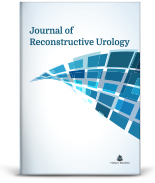Objective: Despite such difficulties and the presence of minimally invasive techniques, open kidney transplant is still a popular method in many clinics worldwide. We tried to identify our incision for kidney transplantation, to present the anatomical limits of the incision and to discuss its advantages-disadvantages. Material and Methods: Patient selection: Ages, number of living donors-cadaver donors, anastomosis durations, operation durations, surgical incision length, surgical site circumference, post-op incisional hernia rate and presence of wound site infection were noted for the 77 patients included. Surgical Technique: After the transverse line drawn at the umbilicus level, a line connecting umbilicus and spina iliaca anterior superior (SIAS) is drawn. The center of the umbilicus-SIAS line is the lateral edge of the rectus abdominis muscle. The endpoint of our incision is 1-2 cm superior to the junction of the tuberculum pubicum with the rectus muscle. Results: Sixty nine of these kidney transplantations (89.6%) were from living and 8 were (10.3%) from cadaver donors. For transplants from a living donor, mean anastomosis duration was 31,8±7.3 min and mean operation duration was 150.6±27 min. For cadaver donors, mean anastomosis duration was 29.6±4.4 min and the mean operation duration was 137±33 min. Post-operative wound site infection was observed in 7 (9.1%) patients in 77 kidney transplantation operations. The postoperative incisional hernia was observed in 7 patients (9.1%). Conclusion: Our incision, named as renal transplantation incision, can reach the surgical site without damaging the anatomic layers and present a quite good view of the surgical site. To provide better evaluation, applications with a higher number of patients are needed.
Keywords: Kidney transplantation; surgical wound site
Amaç: Pek çok zorluğuna ve minimal invaziv tekniklerin varlığına rağmen, açık böbrek nakli hala dünya genelinde birçok klinikte popüler bir yöntemdir. Biz bu yazımızda, böbrek nakli için kullandığımız kesiyi belirlemeye, kesinin anatomik sınırlarını açıkça ortaya koymaya, avantaj ve dezavantajlarını tartışmaya çalıştık. Gereç ve Yöntemler: Hasta seçimi: Dahil edilen 77 hastanın, yaşları, canlı donör-kadavra donör sayısı, anastomoz süreleri, operasyon süreleri, cerrahi insizyon uzunluğu, cerrahi alanın daire çevresi, ameliyat sonrası insizyonel herni oranı ve yara yeri enfeksiyonu varlığı kaydedildi. Cerrahi teknik: Umblikus hizasından çekilen transvers çizgi sonrası umblikus ile spina ilyaka anterior superioru (SIAS) birleştiren çizgi çekilir. Umblikus-SIAS çizgisinin ortası rektus abdominis kasının lateral kenarıdır. İnsizyonumuzun bitiş yeri tuberculum pubicum'un rektus kası ile birleşim yerinin 1-2 cm superiorudur. Bulgular: Böbrek nakillerimizin 69 (%89,6)'u canlı donörden, 8 (%10,3)'i kadavra donörden yapılmıştır. Canlı donörden nakiller için; ortalama anastomoz süresi 31,8±7,3 dakika ve ortalama operasyon süresi 150,6±27 dakikaydı. Kadavra donörden nakiller için; ortalama anastomoz süresi 29,6±4,4 dakika ve ortalama operasyon süresi 137±33 dakikaydı. 77 böbrek nakli operasyonundan, 7 hastada (%9,1) ameliyat sonrası yara yeri enfeksiyonu gözlendi. Postoperatif insizyonel herni ise 7 hastada (%9,1) gözlendi. Sonuç: Renal transplantasyon insizyonu adını verdiğimiz insizyonumuz, operasyon alanına anatomik katmanları bozmadan ulaşarak, operasyon alanını oldukça iyi bir şekilde gösterebilmektedir. Daha iyi değerlendirilebilmesi için daha çok hasta ile uygulamalara ihtiyaç vardır.
Anahtar Kelimeler: Böbrek nakli; cerrahi yara yeri
- Cinqualbre J, Kahan BD. René Küss: fifty years of retroperitoneal placement of renal transplants. Transplant Proc. 2002;34(8):3019-25.[Crossref] [PubMed]
- Øyen O, Scholz T, Hartmann A, Pfeffer P. Minimally invasive kidney transplantation: the first experience. Transplant Proc. 2006;38(9): 2798-802.[Crossref] [PubMed]
- Oberholzer J, Giulianotti P, Danielson KK, Spaggiari M, Bejarano-Pineda L, Bianco F, ET AL. Minimally invasive robotic kidney transplantation for obese patients previously denied access to transplantation. Am J Transplant. 2013;13(3):721-8.[Crossref] [PubMed] [PMC]
- Kishore TA, Shetty A, Tharun BK, John EV, Bhat S. Renal transplantation through a modified non-muscle-cutting Pfannenstiel incision. Int Urol Nephrol. 2014;46(5):901-4.[Crossref] [PubMed]
- Kiberd B, Panek R, Clase CM, MacDonald AS, McAlister V, Belitsky P, et al. The morbidity of prolonged wound drainage after kidney transplantation. J Urol. 1999;161(5): 1467-9.[Crossref] [PubMed]
- Ho D, Lynch RJ, Ranney DN, Magar A, Kubus J, Englesbe MJ. Financial impact of surgical site infection after kidney transplantation: implications for quality improvement initiative design. J Am Coll Surg. 2010;211(1): 99-104.[Crossref] [PubMed]
- Ratner LE, Montgomery RA, Kavoussi LR. Laparoscopic live donor nephrectomy. A review of the first 5 years. Urol Clin North Am. 2001;28(4):709-19.[Crossref] [PubMed]
- Dols LF, Kok NF, Ijzermans JN. Live donor nephrectomy: a review of evidence for surgical techniques. Transpl Int. 2010;23(2):121-30.[Crossref] [PubMed]
- Horgan S, Vanuno D, Benedetti E. Early experience with robotically assisted laparoscopic donor nephrectomy. Surg Laparosc Endosc Percutan Tech. 2002;12(1):64-70.[Crossref] [PubMed]
- Rocca X, Espinoza O, Hidalgo F, Gonzalez F. Laparoscopic nephrectomy: safe and comfortable surgical alternative for living donors and for good results of graft function. Transplant Proc. 2005;37(8):3349-50.[Crossref] [PubMed]
- Greco F, Hoda MR, Alcaraz A, Bachmann A, Hakenberg OW, Fornara P. Laparoscopic living-donor nephrectomy: analysis of the existing literature. Eur Urol. 2010;58(4):498-509.[Crossref] [PubMed]
- Modi P, Pal B, Kumar S, Modi J, Saifee Y, Nagraj R, et al. Laparoscopic Transplantation Following Transvaginal Insertion of the Kidney: Description of Technique and Outcome. Am J Transplant. 2015;15(7):1915-22.[Crossref] [PubMed]
- Doumerc N, Roumiguié M, Rischmann P, Sallusto F. Totally robotic approach with transvaginal insertion for kidney transplantation. Eur Urol. 2015;68(6):1103-4.[Crossref] [PubMed]
- Malinka T, Banz VM, Wagner J, Candinas D, Inderbitzin D. Incision length for kidney transplantation does not influence short- or long-term outcome: a prospective randomized controlled trial. Clin Transplant. 2013;27(5): E538-45.[Crossref] [PubMed]
- Giblin L, O'Kelly P, Little D, Hickey D, Donohue J, Walshe JJ, et al. A comparison of long-term graft survival rates between the first and second donor kidney transplanted-the effect of a longer cold ischaemic time for the second kidney. Am J Transplant. 2005;5(5):1071-5.[Crossref] [PubMed]
- Starzl TE, Marchioro TL, Morgan WW, Waddell WR. A technique for use of adult renal homografts in children. Surg Gynecol Obstet. 1964;119:106-8.[PubMed] [PMC]
- Nanni G, Tondolo V, Citterio F, Romagnoli J, Borgetti M, Boldrini G, et al. Comparison of oblique versus hockey-stick surgical incision for kidney transplantation. Transplant Proc. 2005;37(6):2479-81.[Crossref] [PubMed]







.: İşlem Listesi